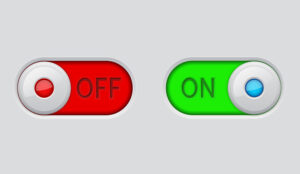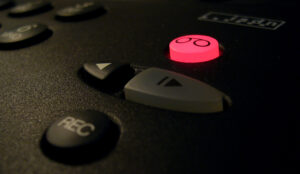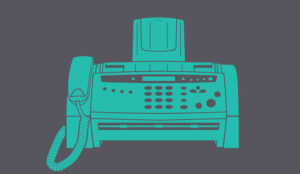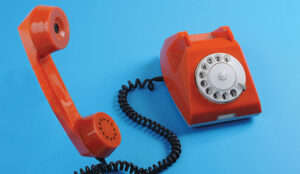On the face of it, network answer machine detection sounds very exciting. It offers the ability to detect answer machines through ISDN messages before the call is answered.
It has been hard to get facts about how well it works, and even if it actually exists.
We asked a number of suppliers and consultants for their opinions and got very conflicting answers.
It exists but no carriers currently offer it
Network-based answer machine detection (AMD) is not a myth – it does exist, although in the main, the network providers don’t deploy it. Network AMD only works for network-provided answering machines (such as BT 1571, voicemail provided by mobile carriers, etc).
Network AMD does work. When a call hits the voicemail, the mobile carrier would then send a message back down one channel, letting the contact centre system know that it was a machine, whilst also playing a recorded message down another channel. For this to work, the software at the contact centre would need to be able to check for that message, and then it would know for certain what it was.

Dave Ogden
At the moment, network carriers are able to use a tone or signalling to inform that the call is being diverted. However, to date, I am not aware of any carrier that currently offers it as a service.
Whilst there are plenty of benefits to both consumers and organisations – not only the usual advantages of using AMD such as increased productivity and elimination of silent calls if a message is played – the onus is very much on the industry to make representations to progress this. Fewer people than ever use traditional answering machines at home, with many favouring their carrier’s voicemail, and this is an opportunity for the technology behind AMD to find a new home.
Dave Ogden, Solutions Consultant at Aspect (www.aspect.com)
Network answer machine detection does not exist
Given inherent levels of reliability of around 85%-90% for cadence techniques of answer machine detection, many vendors have sought alternative methods of doing AMD in order to keep the practice alive. Two themes are recurrent: network answer machine detection and byte pattern recognition.
Any claims to use network answering machine detection (i.e. AMD based on ISDN signalling, rather than sound patterns) are fatuous. It does not exist. If it did there would be no debate and Ofcom’s job would be made a lot easier.

Michael McKinlay
Byte pattern recognition works by picking up encoded audio which follows defined sequences of bytes. This technique works but has very limited application. There is no such thing as a standard network voicemail message. Networks must offer consumer choice. Some consumers customise, some simply switch voicemail off and some networks have equipment that does not encode voicemail speech consistently. The result of this is that network voicemail can be reliably detected using byte pattern recognition in around 15% of cases in the UK.
The inescapable conclusion is that AMD can’t deliver the low levels of nuisance calls that Ofcom rightly mandates. Our view is that use of AMD is bad practice leading to bad customer relations and lower call centre profits. As Sytel has always said: just switch it off.
Michael McKinlay, Managing Director, Sytel
Pull the plug on AMD
AMD has been around for over a decade now, so I’m surprised the subject still gets airtime. We recommend to all our customers to turn this feature off. In the old days when analogue was king, these tools were more accurate, but the network is more complex now with multiple providers and technologies such as ISDN and more recently SIP, so it is more difficult to prove it’s 100% reliable.

Carl Adkins
In our opinion, the risks of using AMD outweigh the benefits. Whether you’re contacting prospects or existing customers, the data pot is getting smaller and smaller, so it makes little sense to annoy contacts further with nuisance calls. There’s still too much emphasis on the number of dials and talk-time, when really the focus should be on the quality of the interaction.
If you want to maximise your profitability rather than turn off customers or even face a large fine from Ofcom for non-compliance, then base your contact strategy on raising the value of the call itself. Make sure your agents have easy access to all the information they need on an individual, without having to open different screens or transfer the call to another department. If you concentrate on removing the barriers to effective one-to-one communications then your customers will start to value you and the numbers will look after themselves.
Carl Adkins, CEO at Infinity CCS
100% accurate and no false positives
For a long time, the subject of answering machine detection (AMD) has been at the forefront of most conversations regarding automatic calling system technologies, principally those of diallers, and particularly predictive diallers.
The latest technology can be almost as good as the human ear at detection of a genuine human voice. But it is fair to say that, with only 2 seconds in which to make a decision, most diallers struggle to get it right within the rigid constraints of Ofcom regulations. The big offender here is the ‘false positive’ call. This is where a real person answers their phone, but the dialler decides that it’s reached an answering machine.
Most diallers struggle at this point but there is light at the end of the tunnel.
The term ‘network detection’ has been coined for a type of answering machine detection that can operate with 100% accuracy and generate no false positives.
This technology uses digital signals sent by the telecoms carriers to decide if the dialled call is going to be answered by a live speaker or not (live speaker detection). Because it is digitally signalled (either a 1 or 0: on or off) it’s impossible for the dialler to get it mixed up. Things like noise on the line have no impact. Most importantly, these signals are sent before the customer’s phone even rings, so the dialler can make a decision within milliseconds and before there is even a connection. Thus, this type of call is outside the scope of the Ofcom rules on 2 seconds, etc.
Why do most diallers not exploit this technology? The reasons are rooted in history: the majority of diallers on sale in the UK today can trace their ancestry back to the USA – the grandfather of the call centre industry. American telecoms standards are not as comprehensive, not as rigorously adhered to, as those in Europe.
Indeed, we have our own ‘Euro ISDN’ standard, which is richer, more robust and more accurate than the US equivalent. Countries such as Germany were early adopters of ISDN and leapfrogged the UK with new digital networks. Diallers were designed which fully exploit these better quality digital networks. Being designed from the outset to use digital ‘network detection’ has significant advantages and these diallers will invariably outperform US-originated diallers that cannot exploit this technology.
Advanced diallers are available today which use digital information elements and fingerprinting techniques which indicate network-based answering machines with 100% accuracy. They rely on the telecoms carrier sending the digital signals and if it’s detected that a call is routed to such a machine, the dialler can abort the call attempt immediately. If the signal is not provided by the telco, then there is still zero risk of a false positive – the call is simply put through to an agent to progress as normal.
Rob Denbeigh, IT Campus
You could do it in the PBX, but not externally
The connect message from the voicemail should be a fixed number. Hence it could be possible that there will be a difference if the destination connect is different from the expected destination or the fixed voicemail.
Yes, it can be seen when looking at the display of the phone when dialling internally on a PBX. When you dial a number but another station responds then you can identify that internally but sometimes also externally.
It is the CONNECTED_IE which is different from the DIALLED_IE and in the Connected ISDN message the real one could be configured if wanted.
There is no external VoiceMail IE but it could be invented, although this might cause many problems for all the equipment that connects to such special networks.
Lode Vande Sande is a CEO of technical consultants Care4CC (www.care4cc.com)
Not in the UK
Network answer machine detection is an increasingly popular technology, although primarily in the USA where it is becoming common. As yet we have seen no live deployments in the UK – perhaps one of the reasons why some have questioned whether the capability actually exists.
In theory, there are no technical barriers to its deployment here, particularly were it to be offered as a network-based offering by one of the major carriers. However, we’ve yet to see an operational network answer machine detection solution in the UK.
The technology also only applies to certain types of answerphones that are able to pass back a message through ISDN signals. The advantage of such an ISDN/SIT messaging approach is that predictive diallers can recognise immediately if their call has been picked up by an answering machine – thus reducing the risk of false positives and abandoned calls.

It’s also important to note that we’re only talking about network answer machine detection. Premise-based systems don’t provide the same messaging, so it would still remain difficult to detect within two seconds when using AMD detection. Similarly, network answer machine technology wouldn’t pick up on any home-based answerphones, which we suspect still account for a significant proportion of UK answerphones.
These factors combine to suggest that, even with network answer machine technology, answer machines will remain difficult to detect within two seconds, and that – to remain compliant with stringent Ofcom legislation – AMD technology should stay disabled.
Mark Hamblin, Head of Avaya Practice, Sabio (www.sabio.co.uk)
[Editor’s note. I have studied the Euro ISDN specs and have looked at a range of ISDN traces. So far, I can find no ISDN Message that would indicate that a call has been answered by an answering machine. If anyone can highlight this for me, I would be very interested to see it.]
Author: Jo Robinson
Published On: 27th Jun 2012 - Last modified: 12th Nov 2024
Read more about - Technology, Alvaria, Answer Machine Detection (AMD), Carl Adkins, Ofcom, Sabio, Sytel
















